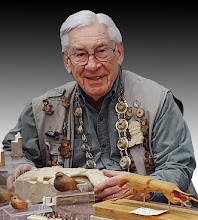This BLOG is sponsored by “Misty Hollow Carving”. You are welcome to visit Misty Hollow and see all of my carvings.
My Web Site is a like a Gallery – please drop in for a stroll through.
To help me promote my Web Site please copy this URL address and email to someone today http://www.murraylincoln.com/
* * * * * * * *
Today’s Blog Post
Our Dove Family and the First Flights
Seven days ago I wrote about the stoppage of our Tree Cutting/Pruning adventure. All because Mrs. Dove and her two babies. (http://murraylincoln.blogspot.com/2011/07/power-of-dove.html )
Our friend Anthony Weinczok, from ACE Tree Care couldn’t do the work because of the small family if doves sitting right where he had to begin his climb up the tree and also where his last cut might be. We were afraid that the even the sound of the chain saw could scare her away from the nest.
The problem was that we had no idea when she would be taking her babies from the nest. I wasn’t sure when the nest would be vacated.
Well it happened two days ago – July 20, 5 days after Anthony found the nest.
They are all flying now. Mrs. Dove and her two babies are up and away.
Their first perch was the top of my vehicle and then the second was the top of our neighbor’s house trailer.
Fortunately I was able to get a few photos of this special happening. The babies were not at all afraid of me at this stage of their life. They have been so busy getting their feathers ready for flying that they hadn’t yet developed that deep fear that will protect them as well.
It has been amazing to watch the way that they she leads her small family.
She flies a little ways and then waits. The first one takes flight and then the second one follows. The same young one goes first each time and then the second one follows the example.
I feel like a proud grand parent today. The nest is empty and the babies are flying.
She is now leading them closer to the bird feeder in our backyard. They are not eating yet – dad and mom still feed them
Some background..(from Wikipedia) quote...
Courtship begins with a noisy flight by the male, followed by a graceful, circular glide with outstretched wings and head down. After landing, the male will approach the female with a puffed out breast, bobbing head, and loud calls. Mated pairs will often preen each other's feathers.
The male then leads the female to potential nest sites, and the female will choose one. The female dove builds the nest. The male will fly about, gather material, and bring it to her. The male will stand on the female's back and give the material to the female, who then builds it into the nest. The nest is constructed of twigs, conifer needles, or grass blades, and is of flimsy construction. Mourning doves will sometimes requisition the unused nests of other Mourning Doves, other birds, or arboreal mammals such as squirrels,
Most nests are in trees, both deciduous and coniferous. Sometimes, they can be found in shrubs, vines, or on artificial constructs like buildings, or hanging flower pots. When there is no suitable elevated object, Mourning Doves will nest on the ground.
The clutch size is almost always two eggs. Occasionally, however, a female will lay her eggs in the nest of another pair, leading to three or four eggs in the nest. The eggs are small and white. Both sexes incubate, the male from morning to afternoon, and the female the rest of the day and at night.
Mourning Doves are devoted parents; nests are very rarely left unattended by the adults. When flushed from the nest, an incubating parent may perform a nest-distraction display, or a broken-wing display, fluttering on the ground as if injured, then flying away when the predator approaches it.
Incubation takes two weeks. Mourning Doves are strongly altricial, with the young, called squabs, being helpless at hatching and covered with down.Both parents feed the squabs pigeon's milk (dove's milk) for the first 3–4 days of life. Thereafter, the crop milk is gradually augmented by seeds. Fledging takes place in about 11–15 days, before the squabs are fully grown but after they are capable of digesting adult food. They stay nearby to be fed by their father for up to two weeks after fledging.
Mourning Doves are prolific breeders. In warmer areas, these birds may raise up to six broods in a season. This fast breeding is essential because mortality is high. Each year, mortality can reach 58% a year for adults and 69% for the young.
The Mourning Dove is monogamous and forms strong pair bonds. Pairs typically reconvene in the same area the following breeding season, and sometimes may remain together throughout the winter. However, lone doves will find new partners if necessary.
End quote
This week I feel like a proud grandpa. Our Babies are out on their own. Wow!
~ Murray Lincoln ~
http://www.murraylincoln.com/
Resource:
http://murraylincoln.blogspot.com/2011/07/power-of-dove.html
http://en.wikipedia.org/wiki/Mourning_Dove
The empty nest











No comments:
Post a Comment